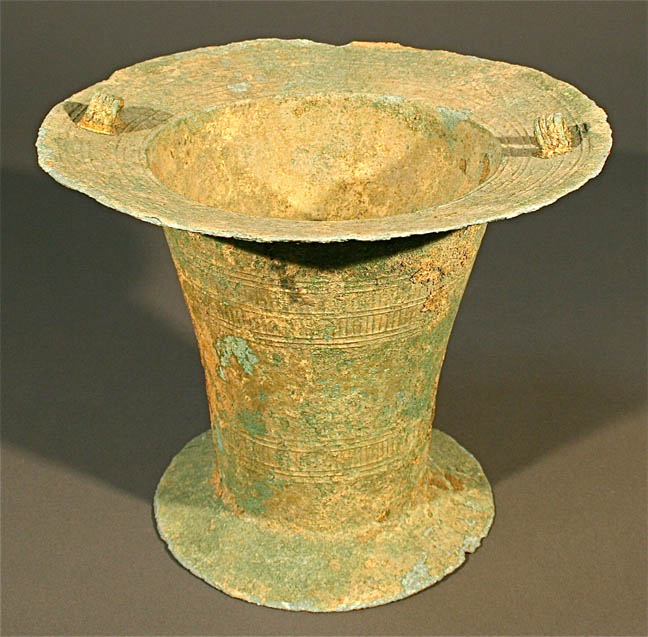

Title: Large Chinese bronze ancient artifact display vessel
Shipping: $29.00
Artist: N/A
Period: Unassigned
History: N/A
Origin: N/A
Condition: Museum Quality
Item Date: N/A
Item ID: 3371
This is a very large Chinese bronze ancient artifact display vessel. We believe the age of this vessel is from approximately 500 - 800 BC
Link: http://maps.google.com/maps?client=firefox-a&hl=en&ie=UTF8&ll=23.563987,97.734375&spn=76.367537,124.
Chinese art (Chinese: has varied throughout its ancient history, divided into periods by the ruling dynasties of China and changing technology. Different forms of art have been influenced by great philosophers, teachers, religious figures and even political leaders. Chinese art encompasses fine arts and folk arts. Early forms of art in China were made from pottery and jade in the Neolithic period, to which was added bronze in the Shang Dynasty. The Shang are most remembered for their blue casting, noted for its clarity of detail.In early imperial China, porcelain was introduced and was refined to the point that in English the word china has become synonymous with high-quality porcelain. Around the 1st century AD, Buddhism arrived in China, though it did not become popular until the 4th century. At this point, Chinese Buddhist art began to flourish, a process which continued through the 20th century. It was during the period of Imperial China that calligraphy and painting became highly appreciated arts in court circles, with a great deal of work done on silk until well after the invention of paper. Buddhist architecture and sculpture thrived in the Sui and Tang dynasty. Of which, the Tang Dynasty was particularly open to foreign influence. Buddhist sculpture returned to a classical form, inspired by Indian art of the Gupta period. Towards the late Tang dynasty, all foreign religions were outlawed to support Taoism. In the Song dynasty, paintings of more subtle expression of landscapes appeared, with blurred outlines and mountain contours which conveyed distance through an impressionistic treatment of natural phenomena. It was during this period that in painting, emphasis was placed on spiritual rather than emotional elements, as in the previous period. In the Yuan dynasty, painting by the Chinese painter Zhao Mengfu (趙孟頫) greatly influenced later Chinese landscape painting. Under efforts of masters from the Shanghai School during the late Qing Dynasty, traditional Chinese art reached another climax and continued to the present in forms of the "Chinese painting" (guohua, 國畫). The Shanghai School challenged and broke the literati tradition of Chinese art, while also paying technical homage to the ancient masters and improving on existing traditional techniques.